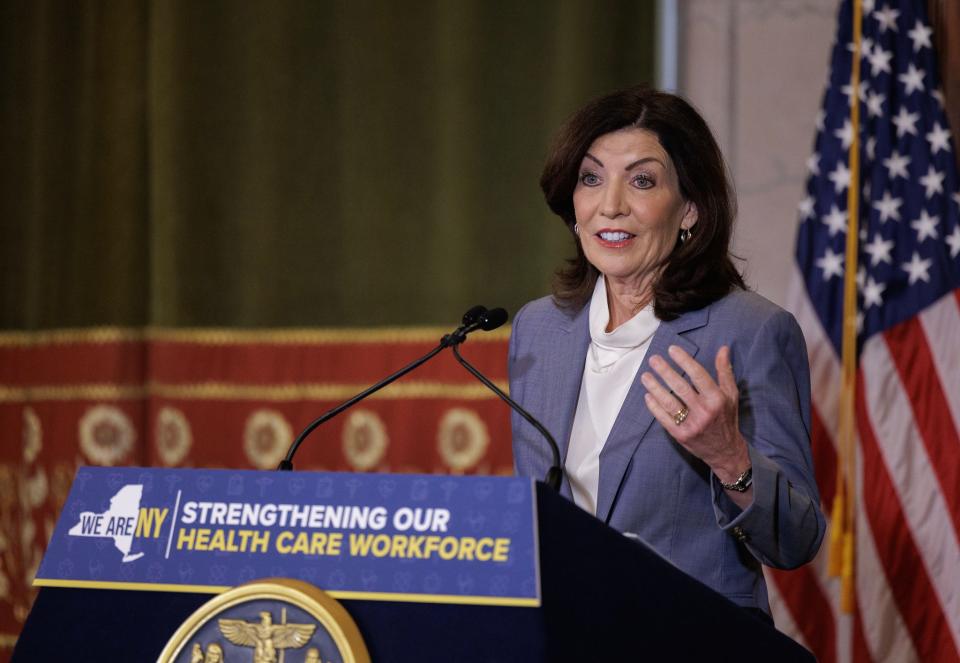New York is taking a smart approach to Medicaid. There is more work to do
There is no denying that the COVID-19 pandemic took its toll on state agencies across the nation. The health crisis spurred increases in unemployment beneficiaries, Medicaid enrollees and safety net services of SNAP and TANF, and spiked demand across many other social services agencies — overwhelming agency staff who were navigating unchartered territory. Three years later, officials in New York are now dealing with a new kind of stress — unwinding pandemic benefits — including the end of continuous Medicaid enrollment, which required that states keep residents on the Medicaid rolls regardless of eligibility. With processing soon underway, best estimates are that New York could see 100,000 or more residents lose coverage; and without the right processes in place, that number could quickly rise.
New York and other states have already started the eligibility renewal process, a monumental undertaking processing millions of New Yorkers after three years on pause. In some states, that’s already resulted in hundreds of thousands being removed from Medicaid. In New York, Medicaid enrollment levels are at an all-time high — 7.9 million as of April 2023 according to the state Department of Health, the state’s Medicaid administrator. At a recent event sponsored by the Rockefeller Institute of Government, state officials remarked that 83% of individuals that need to be redetermined — more than 6 million people of the 8 million-plus that will go through the process — have coverage through New York State of Health, which has been working diligently to prevent, or at least mitigate, significant losses.
NYSOH, New York’s health insurance marketplace, offers New Yorkers a number of important features, including real-time eligibility determinations and integration with other agencies. This includes accessing federal and state data sources to automatically redetermine eligibility and hiring more staff to guide individuals through the process. Along with significant coordination across agencies, New York may be one of the states best positioned to weather the Medicaid redetermination process.

Yet, despite the state’s best efforts and commitment to its residents, a new national survey found that a majority of New Yorkers are unaware that they must get their Medicaid coverage renewed. Although the state is taking the maximum amount of time allowed and conducting the Medicaid redeterminations in waves, it remains an overwhelming administrative burden for DOH — and its approach to workflow and capacity might be at the heart of how many residents maintain or lose coverage.
More: 100K expected to lose Medicaid in NY due to end of COVID emergency. What to know
A decade ago, New York used the Affordable Care Act to “re-vision” Medicaid eligibility in the state — shifting determinations from city and local entities to the state. The end of continuous coverage, however, brings to light opportunities for further improvements to the department’s efficiency. New York will have roughly a year to process three years’ worth of Medicaid redeterminations. Without proper preparation, current staff could quickly become overburdened, increasing processing times.
Despite the increased demand on staff, DOH will still be required to meet the 45-day federally-mandated processing timeline or risk being fined. A looming recession could spark a wave of job losses with people turning to Medicaid for coverage, exacerbating the situation and further straining a staff that is doing double duty processing redeterminations and new applications. And any sort of labor shortage would bog the work down, given that training new staff can take anywhere from 6 to 12 months.
To manage this influx, supervisors need visibility into each staff member’s workload. To maintain — and maximize — agency capacity, it’s critical that each person receives the right work at the right time. For example, agencies see large numbers of renewals and applications multiplying into many more touchpoints with consumers due to process inefficiencies. However, with a more streamlined workflow and workload management solution, these touches can be reduced by up to 50%.
New York can also maximize its use of technology, leveraging current and validated data to increase the rate of no-touch (automatic) eligibility processing to speed up paperwork and eliminate time-consuming individual tasks, ensuring that even if someone is deemed ineligible for Medicaid, they can quickly be routed to a low- or no-cost plan on the exchange.
As Gov. Kathy Hochul’s administration strives to keep high-quality medical services accessible for New Yorkers, the state’s measures of preparation for the Medicaid redetermination process are reassuring. In order to ensure that this work is completed within the required time frame, it is critical that New York use all of the necessary tools at their disposal. It’s vitally important to conduct proper community outreach and plan appropriately so that impacted New Yorkers continue to be aware of these upcoming changes.
Blake Shaw is president of the Change & Innovation Agency (C!A®), a firm dedicated to increasing government’s capacity to do more good.
This article originally appeared on Rockland/Westchester Journal News: NY Medicaid redeterminations: More work to do.

